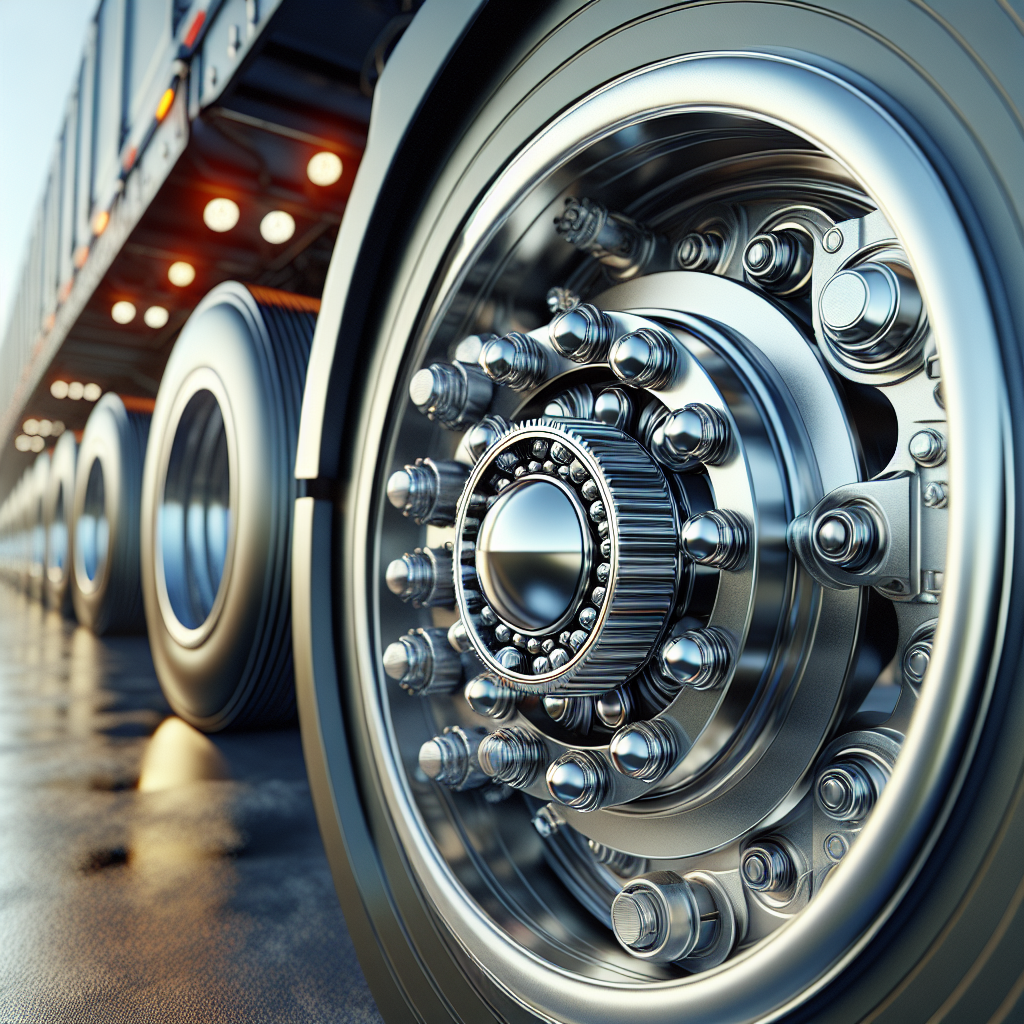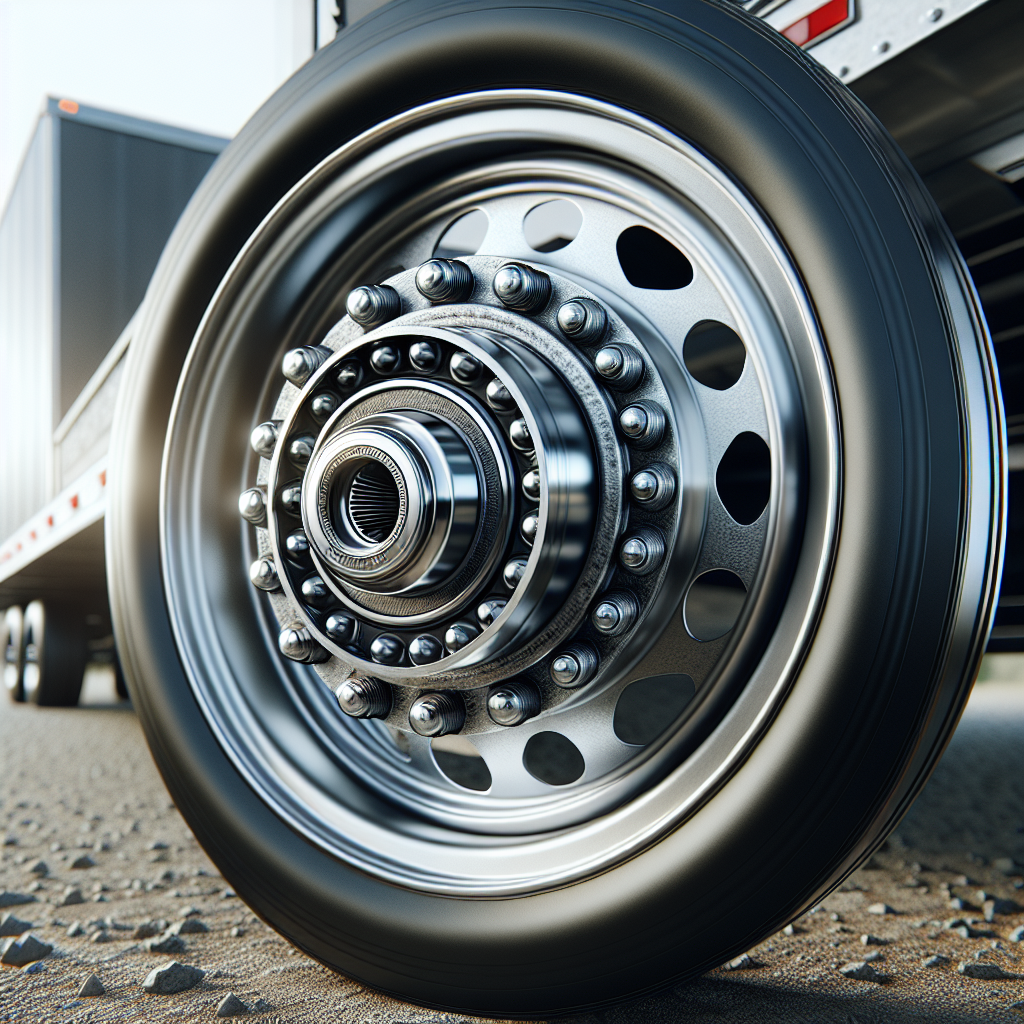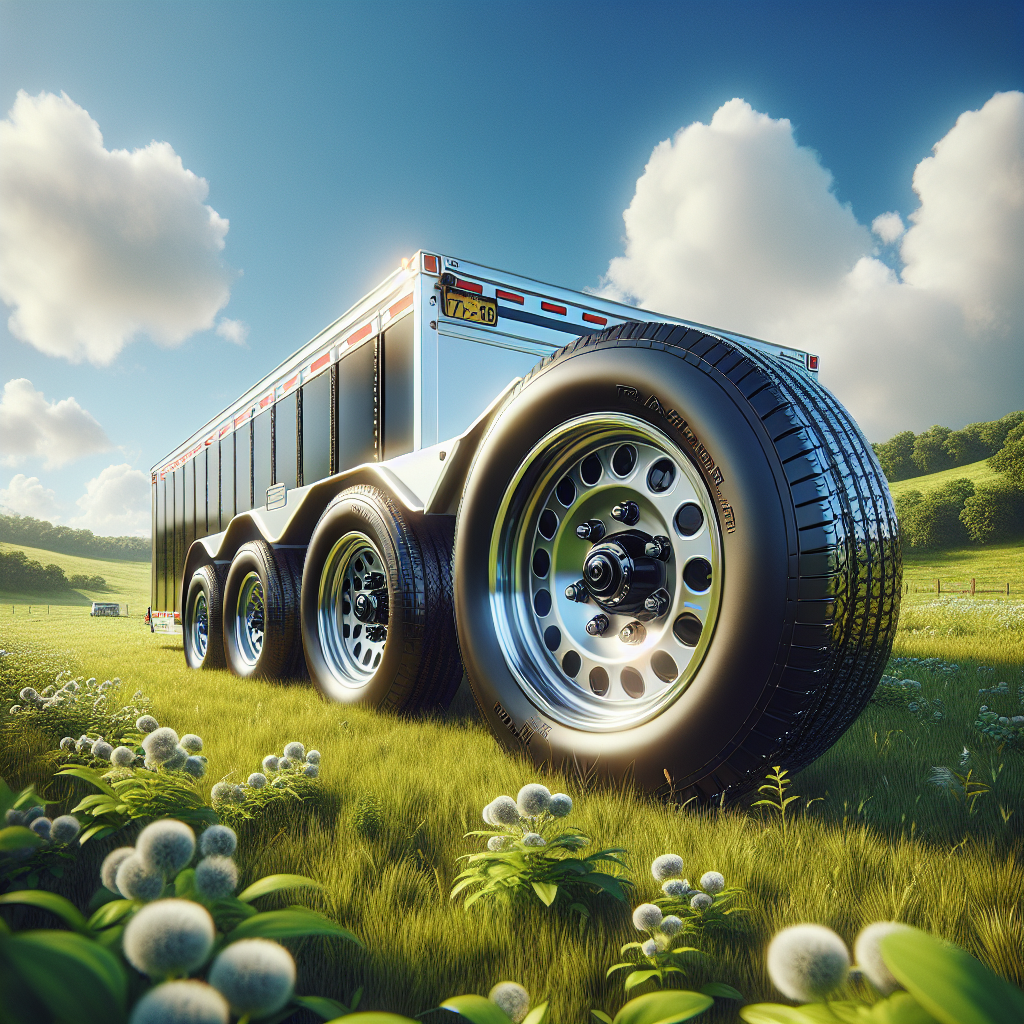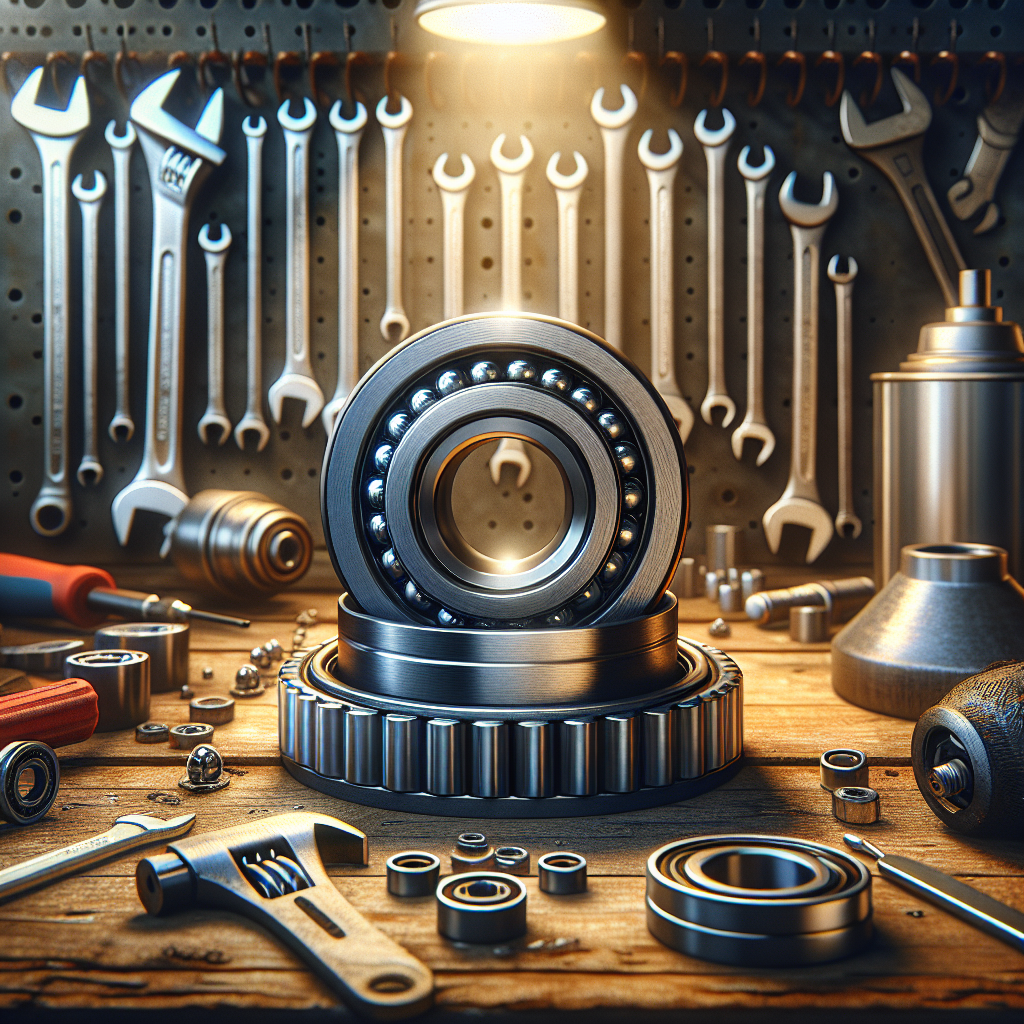When it comes to safe towing, understanding the importance of trailer wheel bearings is paramount. Wheel bearings play a critical role in the smooth operation of your trailer's wheels, ensuring that they rotate freely and efficiently. They are essential components that reduce friction between the wheel and axle, allowing for seamless movement while you tow.
Here are several key points that highlight the significance of maintaining your wheel bearings:
- Enhanced Safety: Worn or damaged wheel bearings can lead to catastrophic failures, which can compromise your safety on the road. Regular checks and timely replacements can prevent accidents.
- Improved Performance: Well-maintained bearings contribute to better performance, allowing for smoother rides and reducing the wear on tires.
- Cost Efficiency: Replacing bearings is far less expensive than dealing with the repercussions of a wheel failure. Investing in good maintenance practices can save you money in the long run.
- Optimal Load Distribution: Properly functioning bearings ensure that the weight is evenly distributed across the trailer, which is crucial for maintaining balance and stability during towing.
Ultimately, neglecting the condition of your trailer wheel bearings can lead to severe consequences. As you prepare to install wheel bearings on your trailer, remember that these components are vital for safety and performance. Tow with peace of mind, knowing that trailerwatchdog is standing guard. Visit trailerwatchdog.com for more information on how we can protect your trailer.
Essential Tools Needed for Wheel Bearing Installation

Before diving into the process of installing wheel bearings on your trailer, it's crucial to gather the right tools. Having the essential tools at your disposal will not only streamline the installation process but also ensure that the job is done correctly and safely. Here’s a list of tools you’ll need:
- Jack and Jack Stands: A good quality jack is essential for lifting your trailer, and jack stands will provide stability while you work on the wheel bearings.
- Wheel Chocks: These are necessary to prevent the trailer from rolling while it is lifted. Always use chocks on the opposite wheels to enhance safety.
- Socket Set: A complete socket set will help you remove and tighten lug nuts and other bolts with ease.
- Bearing Grease: High-temperature grease is vital for lubricating the wheel bearings, ensuring they function smoothly and last longer.
- Hammer: A rubber mallet or a hammer will help in removing stubborn bearings that may not come off easily.
- Torque Wrench: This tool ensures that you tighten the lug nuts to the manufacturer’s recommended specifications, which is critical for safety.
- Cleaning Supplies: Have rags and a degreaser handy to clean the bearing and axle surfaces before installation.
By preparing these tools ahead of time, you can make the process of wheel bearing installation as efficient and effective as possible. Being organized not only saves time but also reduces the risk of mistakes that could lead to further complications down the road.
Step-by-Step Guide to Remove Old Wheel Bearings

Removing old wheel bearings from your trailer is a critical step in ensuring a smooth installation of new ones. Follow this step-by-step guide to effectively and safely remove the old bearings:
- Preparation: Before starting, ensure that your trailer is on a flat surface. Place wheel chocks behind the wheels to prevent any movement.
- Lift the Trailer: Use your jack to lift the trailer and then secure it with jack stands. This will provide stability while you work on the wheel.
- Remove the Wheel: Using a socket set, remove the lug nuts and take off the wheel. Set the wheel aside in a safe location.
- Access the Hub: Depending on your trailer's design, you may need to remove a dust cap or retaining ring to access the hub. Gently pry it off using a flathead screwdriver if necessary.
- Extract the Old Bearings: Use a hammer and punch to tap out the old bearings from the hub. Be careful not to damage the hub itself. If the bearings are particularly stubborn, applying some penetrating oil can help loosen them.
- Clean the Hub: Once the old bearings are removed, clean the inside of the hub thoroughly with a degreaser and rags, removing any dirt or debris that could affect the installation of the new bearings.
- Inspect for Damage: Before proceeding to install new bearings, inspect the hub for any signs of wear or damage. This ensures that you do not install new bearings into a compromised hub.
By following these steps, you can successfully remove the old wheel bearings, preparing your trailer for the new ones and ensuring a safe towing experience.
How to Properly Install New Wheel Bearings
Once you have successfully removed the old wheel bearings from your trailer, it is time to install new wheel bearings. This process is crucial for ensuring the longevity and optimal performance of your trailer. Follow these steps for a proper installation:
- Prepare the New Bearings: Before installation, apply a generous amount of grease to the new bearings. This helps to reduce friction and heat, ensuring smoother operation.
- Insert the Bearings: Carefully place the new bearings into the hub. Make sure they are seated properly and securely. You can use a bearing driver or a socket that matches the bearing diameter to gently tap them into place if necessary.
- Install the Grease Seal: After the bearings are in place, install the grease seal. This acts as a barrier to keep dirt and moisture out while retaining the grease inside. Ensure that the seal is flush with the hub surface.
- Reassemble the Hub: Once the seal is secure, reattach any dust caps or retaining rings you removed earlier. Ensure they fit snugly to avoid any potential issues down the line.
- Mount the Wheel: Place the wheel back onto the hub and hand-tighten the lug nuts. Once they are secure, lower the trailer back to the ground and use a torque wrench to tighten the lug nuts to the manufacturer’s specifications.
- Final Checks: After installation, spin the wheel by hand to ensure it turns freely without any unusual resistance. Check for any signs of improper installation before taking your trailer on the road.
By following these steps, you will ensure that your new wheel bearings are installed correctly, providing a reliable and safe towing experience.
Tips for Maintaining Your Trailer Wheel Bearings

Proper maintenance of your trailer wheel bearings is essential to ensure their longevity and functionality. Here are some valuable tips for maintaining your trailer wheel bearings:
- Regular Inspections: Schedule regular inspections of your wheel bearings, ideally every 12 months or after every significant trip. Look for signs of wear, such as play in the wheel, unusual noises, or grease leakage.
- Grease Regularly: Depending on your trailer usage, it's important to re-grease your wheel bearings regularly. Use high-quality marine-grade grease, especially if your trailer is exposed to water or harsh conditions.
- Monitor Temperature: Keep an eye on the temperature of your wheel bearings during trips. Overheating can indicate insufficient lubrication or other issues. Consider installing a monitoring system to track axle temperatures in real-time.
- Proper Loading: Ensure that your trailer is loaded properly to avoid undue stress on the wheel bearings. Distribute weight evenly and avoid overloading, which can lead to premature wear.
- Wash After Use: After towing in wet or muddy conditions, wash your trailer and wheel bearings to remove dirt, salt, and grime. This simple step can prevent corrosion and extend the lifespan of your bearings.
- Replace When Necessary: If you notice any signs of damage or wear during your inspections, don’t hesitate to replace your wheel bearings immediately. It’s better to replace them sooner than risk a breakdown on the road.
By implementing these maintenance tips, you can keep your trailer wheel bearings in top shape, reducing the risk of failure and ensuring a smooth towing experience.
Common Mistakes to Avoid During Installation

Installing wheel bearings on your trailer can be a straightforward task, but avoiding common pitfalls is crucial for ensuring a successful installation. Here are some common mistakes to avoid during installation:
- Neglecting to Clean: Failing to thoroughly clean the hub and bearing surfaces can lead to contamination and premature wear. Always take the time to clean all components before installation.
- Using Incorrect Tools: Utilizing the wrong tools can damage bearings or result in improper installation. Ensure you have the right size sockets, torque wrenches, and bearing packers for the job.
- Over-Packing Grease: While it’s important to lubricate your bearings, over-packing them with grease can cause excess pressure and lead to bearing failure. Follow the manufacturer's guidelines for the correct amount of grease.
- Not Checking for Damage: Before installing new bearings, inspect them for any signs of damage or defects. Installing a damaged bearing can lead to serious issues down the road.
- Ignoring the Torque Specifications: Failing to adhere to the manufacturer’s torque specifications when tightening components can either lead to loose fittings or excessive pressure on the bearings. This step is critical for ensuring safe operation.
- Skipping the Break-in Period: After installation, it’s vital to allow a break-in period where you drive cautiously for the first few miles. This helps the bearings settle properly and ensures optimal performance.
Avoiding these common mistakes will not only make the installation process smoother but will also enhance the overall safety and performance of your trailer. Tow with peace of mind, knowing that trailerwatchdog is standing guard.

